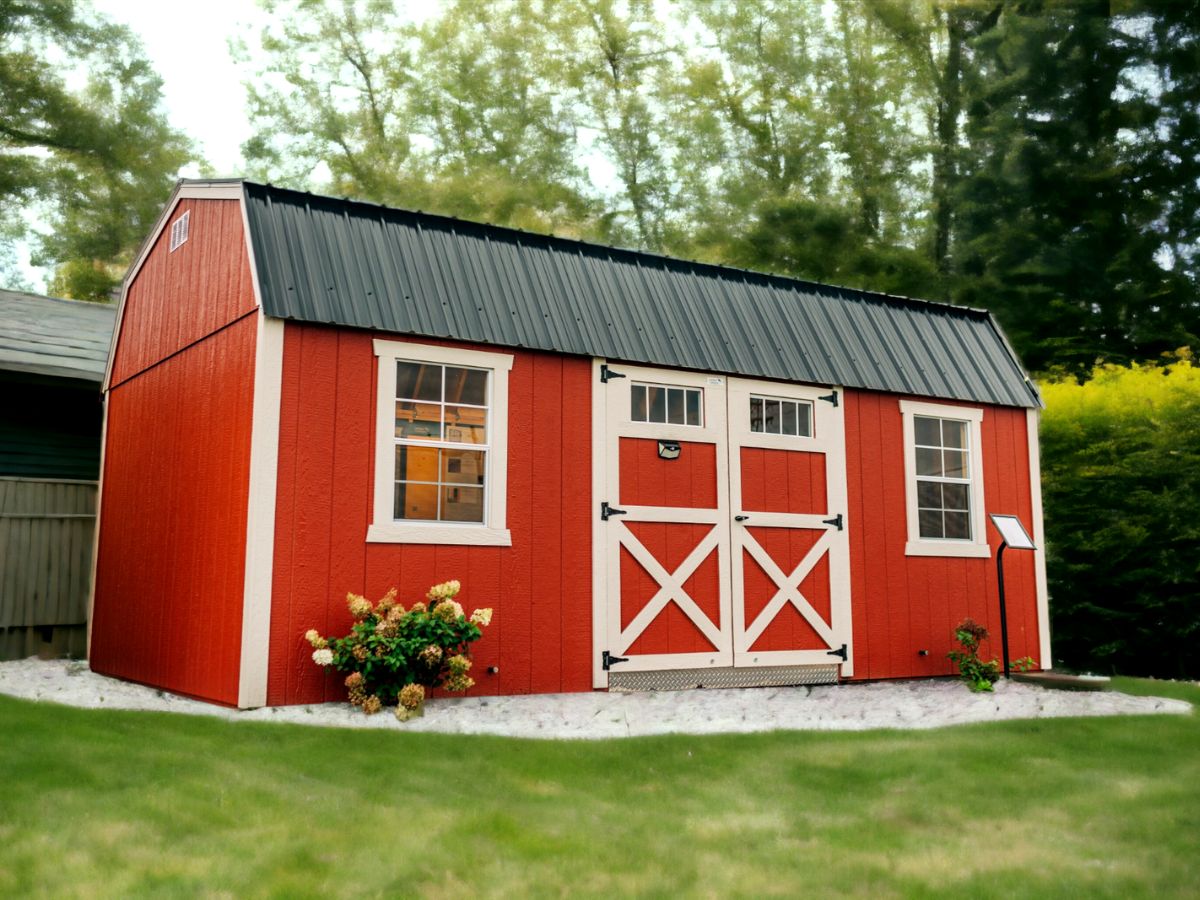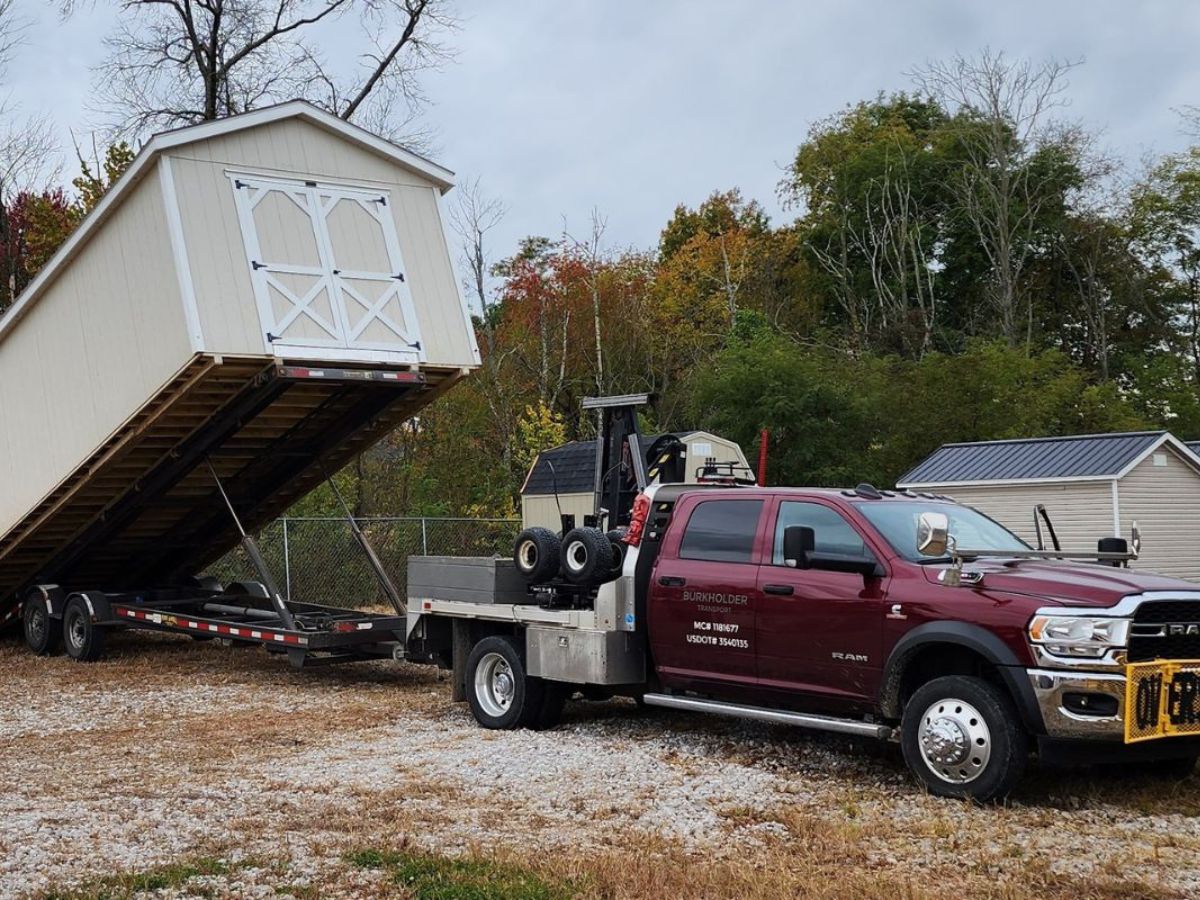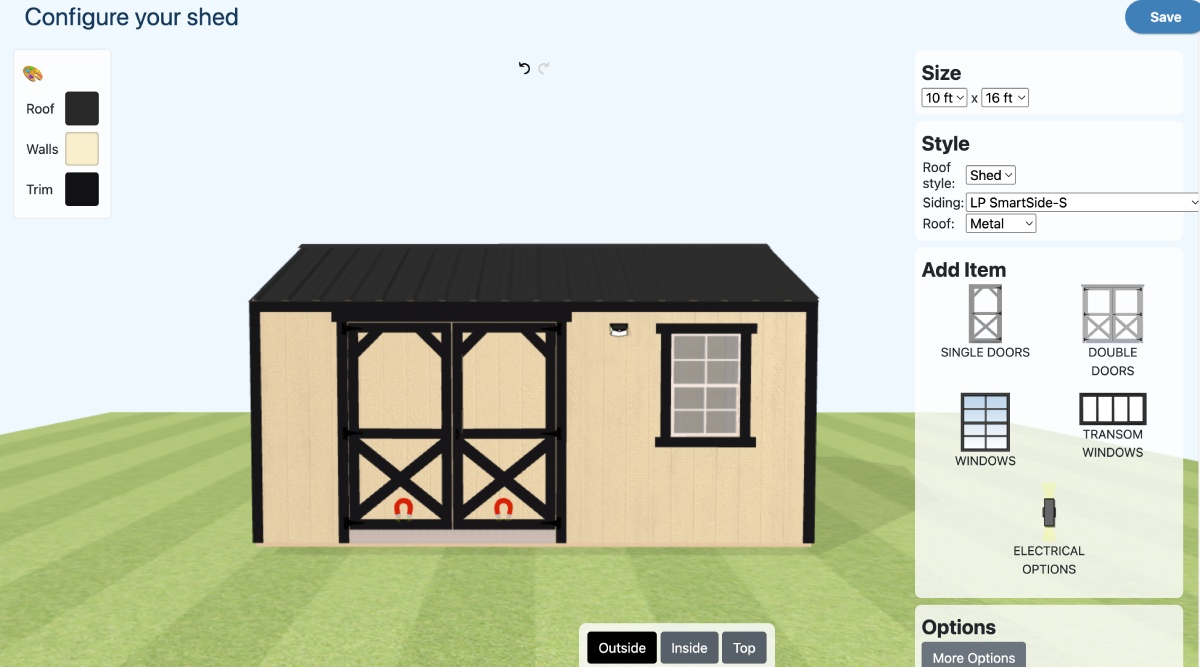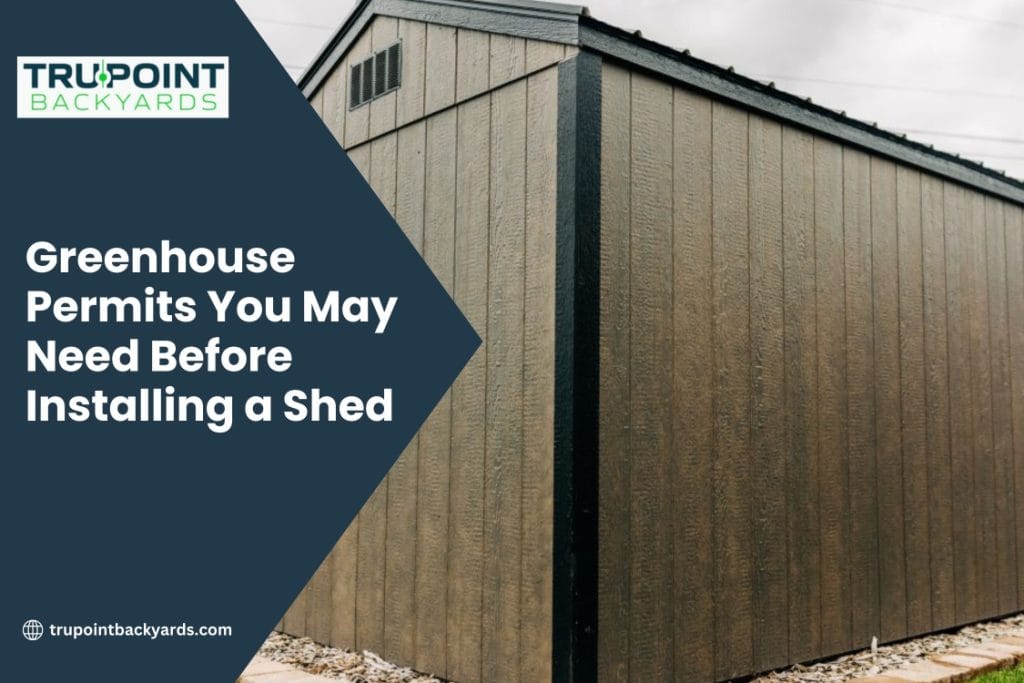When you’re excited about adding a new shed to your backyard, it’s tempting to jump straight into choosing styles, colors, and layouts. At TruPoint Backyards, we know how thrilling it is to design your dream shed. However, before your new structure takes shape, there’s one crucial step that homeowners must not overlook: permitting.
Permits can feel like a hassle, but they are essential to ensure your shed complies with local laws, safety standards, and property regulations. Knowing what permits you may need ahead of time can save you time, money, and frustration. In this guide, we’ll break down the types of permits you might need, how to find the right information for your area, and how TruPoint Backyards makes the process smoother.
Why Shed Permits Matter
Permits are not just bureaucratic red tape. They serve several important purposes:
Protect Property Values: Unauthorized structures can lower your home’s value or even become a selling issue.
Ensure Safety: Permits make sure your shed won’t block utility access or violate zoning regulations.
Avoid Penalties: Installing a shed without the proper permits can lead to fines or being forced to remove the structure.
Permitting is a key part of responsible homeownership and backyard improvement. Getting it right the first time is the best way to enjoy your new space without future headaches.
Do All Sheds Require a Permit?

Not always. Smaller sheds sometimes fall under “permit-exempt” status, depending on local building codes. However, even when a permit is not technically required, there may still be zoning or property restrictions to follow.
Here are some general guidelines:
Sheds under a certain size (typically 100 to 200 square feet) may not need a building permit
Larger sheds, or those with utilities like water or electricity, often do
HOAs and townships may have additional rules regardless of structure size
The key takeaway: Even if you think you’re building a small or “simple” shed, check with your local authorities. When you work with TruPoint Backyards, we can help guide you through the right questions to ask.
Common Types of Permits You May Need
Depending on your municipality and the type of shed you’re installing, you may need one or more of the following permits.
1. Building Permit
A building permit is the most common requirement for backyard sheds. It ensures that your structure complies with local construction and safety codes.
You may need a building permit if:
The shed is larger than your city or county’s size threshold
It is attached to your home or another building
You plan to add insulation, drywall, or interior finishes
It will include plumbing or electrical work
2. Zoning Permit
Zoning laws regulate how land can be used and what types of structures are allowed on residential property. Even if your shed meets building code standards, it must still follow zoning rules.
A zoning permit ensures:
Proper distance from property lines (known as setbacks)
Correct placement within your yard (front, back, or side yard)
That you’re not exceeding the number of structures allowed on your lot
Always check your zoning district’s specific regulations before you begin. In some areas, corner lots or waterfront properties have special restrictions.
3. Electrical Permit
If your shed will have power—whether it’s for lighting, a mini-fridge, power tools, or a home office setup—you’ll likely need an electrical permit. This permit ensures all wiring is up to code and safe for use.
TruPoint Backyards offers sheds that are perfectly suited for electrical upgrades, and we always recommend working with a licensed electrician.
4. Plumbing Permit
Planning to add a sink, toilet, or even a small shower inside your shed? You’ll need a plumbing permit. This is especially important for sheds that will serve as workshops, studios, or guest houses.
Adding plumbing can impact water lines, drainage, and your local utility services, so it must be done by the book.
5. Accessory Structure Permit
Some municipalities issue permits specifically for “accessory structures,” which include sheds, garages, pergolas, and similar additions. This permit confirms that your shed is considered a legal accessory to the main dwelling and not a secondary home.
How to Check Your Local Shed Permit Requirements
Since permit laws vary from one place to another, the best way to get accurate information is to contact your city or county’s building department. Here are a few tips to make the process smoother:
Call ahead before visiting in person
Have your shed plans ready, including dimensions and intended use
Ask about both building and zoning codes
Request a checklist or handout if available
Your township may also have online forms or planning portals to help you apply and track the status of your permit.
What Happens If You Skip the Permit?
Skipping the permit process may feel like an easy way to save time and money, but it can have long-term consequences:
You could face fines or legal action
You may be forced to dismantle the shed
It could complicate future home sales
Your insurance may not cover damages
In short, it’s not worth the risk. TruPoint Backyards always recommends starting with a permit check before placing your shed order.
How TruPoint Backyards Supports You

At TruPoint Backyards, we want every customer to enjoy a smooth, worry-free shed installation. Our team understands the permitting process and is happy to support you with:
Detailed shed plans and drawings to submit with your permit application
Expert guidance on size, placement, and use
Customization tools like our 3D Shed Builder to help you visualize your shed with the correct specs
Clear communication so you always know what’s next
We believe in making your backyard upgrade exciting, not overwhelming. Our sheds are built to meet local codes and provide long-term value.
Steps to Get Ready for Your Shed Permit
Before you finalize your shed purchase or schedule delivery, follow these steps to make sure your project goes smoothly:
Step 1: Determine Your Shed’s Purpose
Knowing how you’ll use the shed helps you understand what types of permits may be required. A storage shed might not need as many approvals as a home office or studio.
Step 2: Choose the Right Size and Location
Think about where in your yard the shed will go and how big it needs to be. Our team can help with layout ideas that meet both your needs and local rules.
Step 3: Use Our 3D Shed Builder Tool
This user-friendly tool lets you design your shed from top to bottom. Choose materials, roof style, doors, windows, colors, and more. You’ll also be able to see exactly how your shed will look before it’s built, making it easier to communicate with your local building department.
Step 4: Contact Your Local Municipality
Call or visit your township office with your shed plans in hand. Ask about any required permits, fees, inspection timelines, and other guidelines.
Step 5: Submit Applications and Wait for Approval
Once your paperwork is submitted, the wait time can vary. Most permits are approved within a few days to a few weeks. During this time, our team at TruPoint Backyards will prepare your custom shed so it’s ready for delivery once approval is complete.
Make Permits a Step, Not a Stumbling Block
Permitting is just one step in the exciting journey of transforming your backyard. With the right information and a reliable partner like TruPoint Backyards, it doesn’t need to be stressful. In fact, it’s your opportunity to start your project with confidence, knowing everything is done right from day one.
We’re here to support you every step of the way—from design to delivery. Whether you’re planning a backyard office, a garden shed, or a hobby space, TruPoint makes it easy to bring your vision to life with top-quality craftsmanship and trusted service.
Start Designing Your Shed Today

Use our easy-to-use 3D Shed Builder Tool to customize your dream shed and get an instant preview of the final product. From size and layout to color and trim, you’re in control of every detail.
Still have questions about permits or where to begin? Contact our team today. We’re always ready to help you get started with expert advice and personal guidance.

